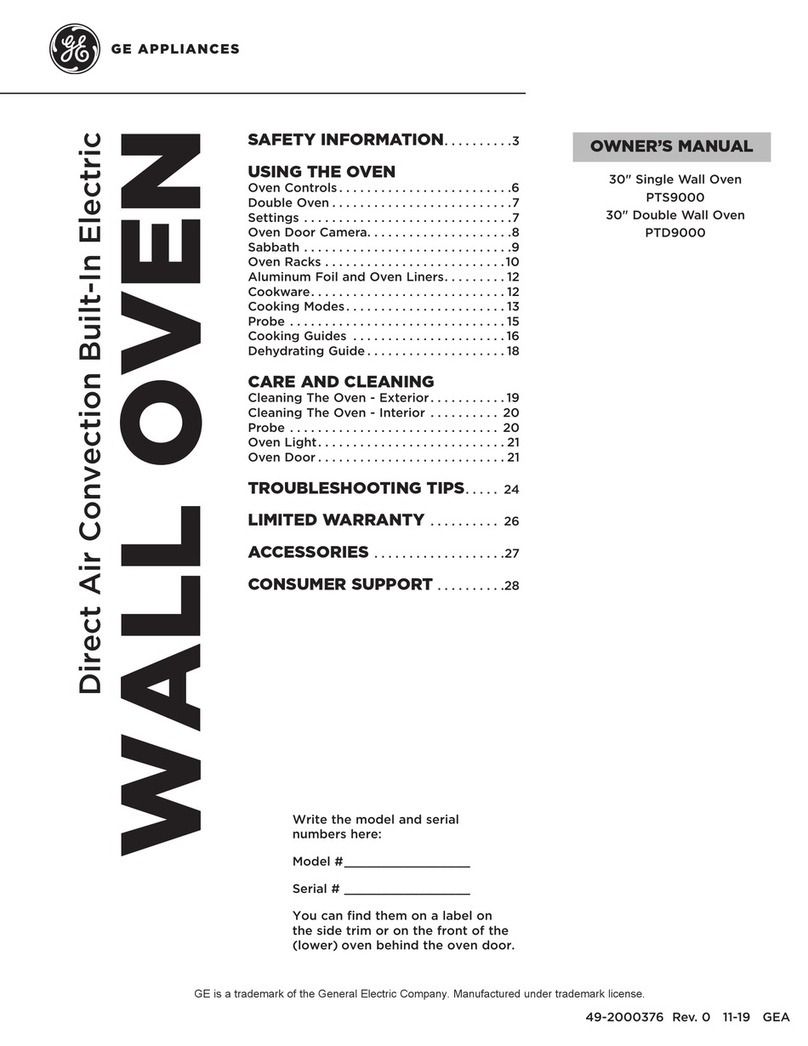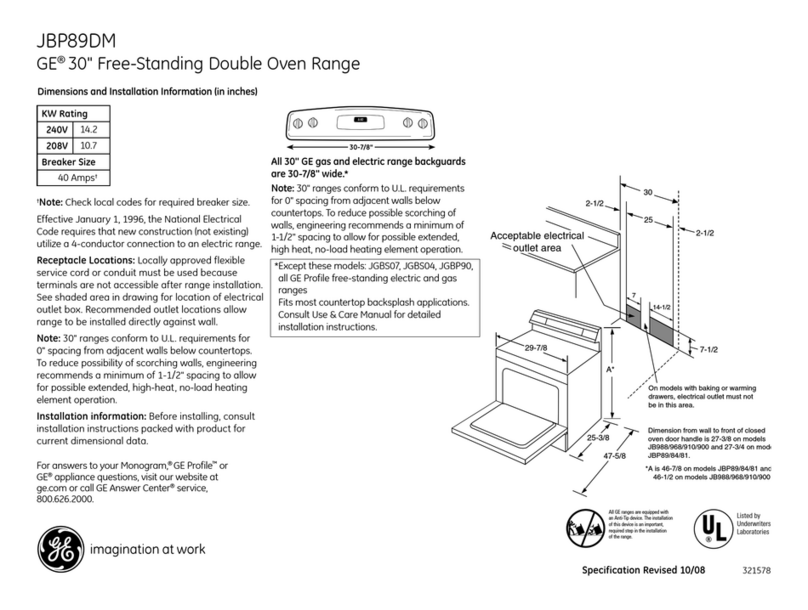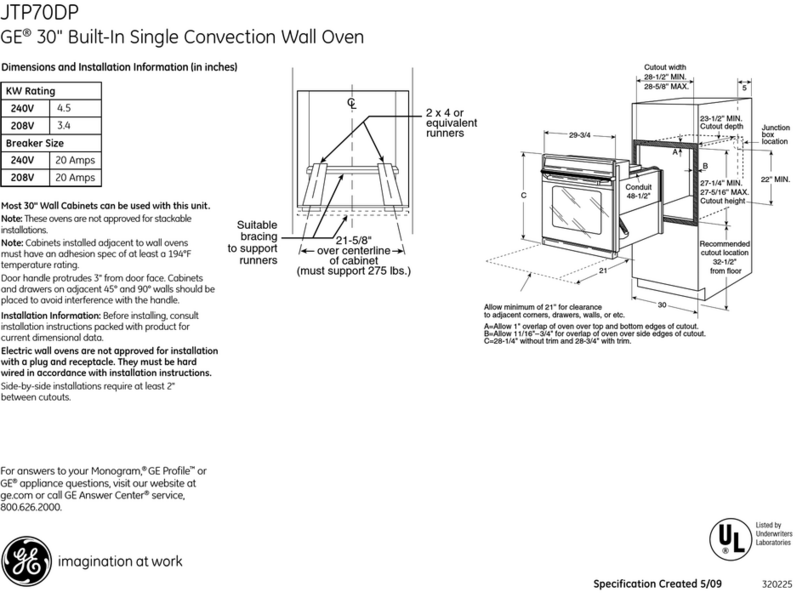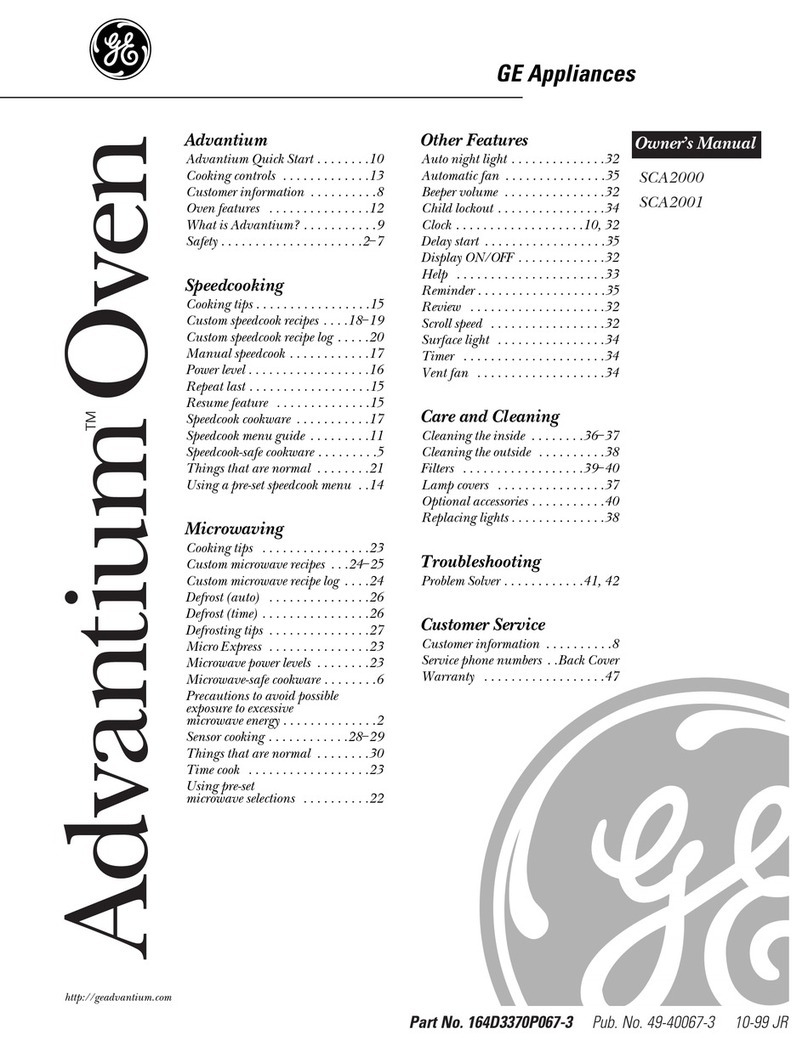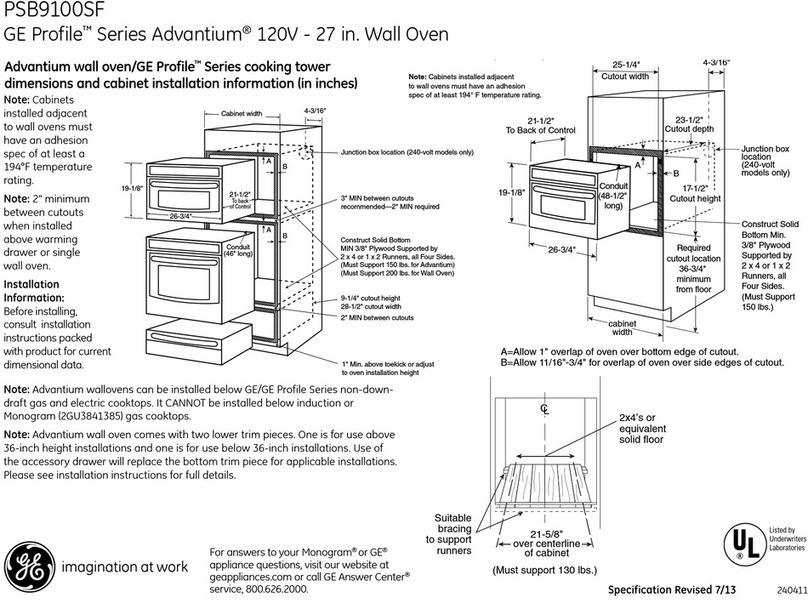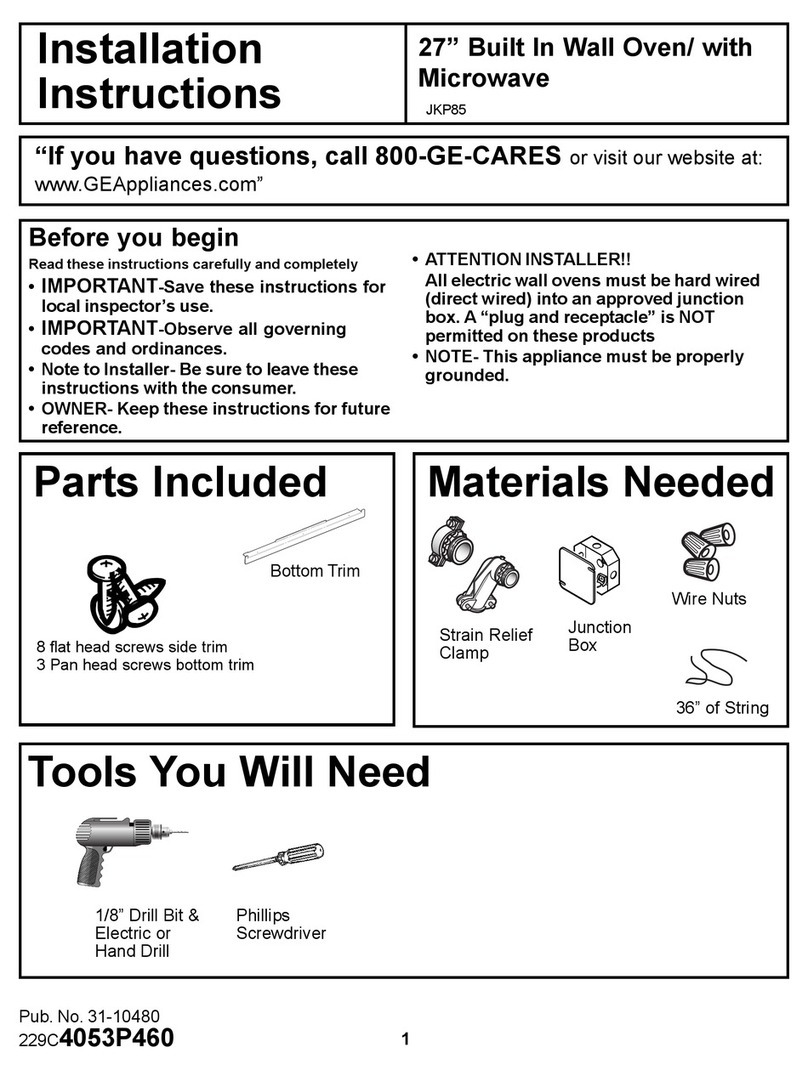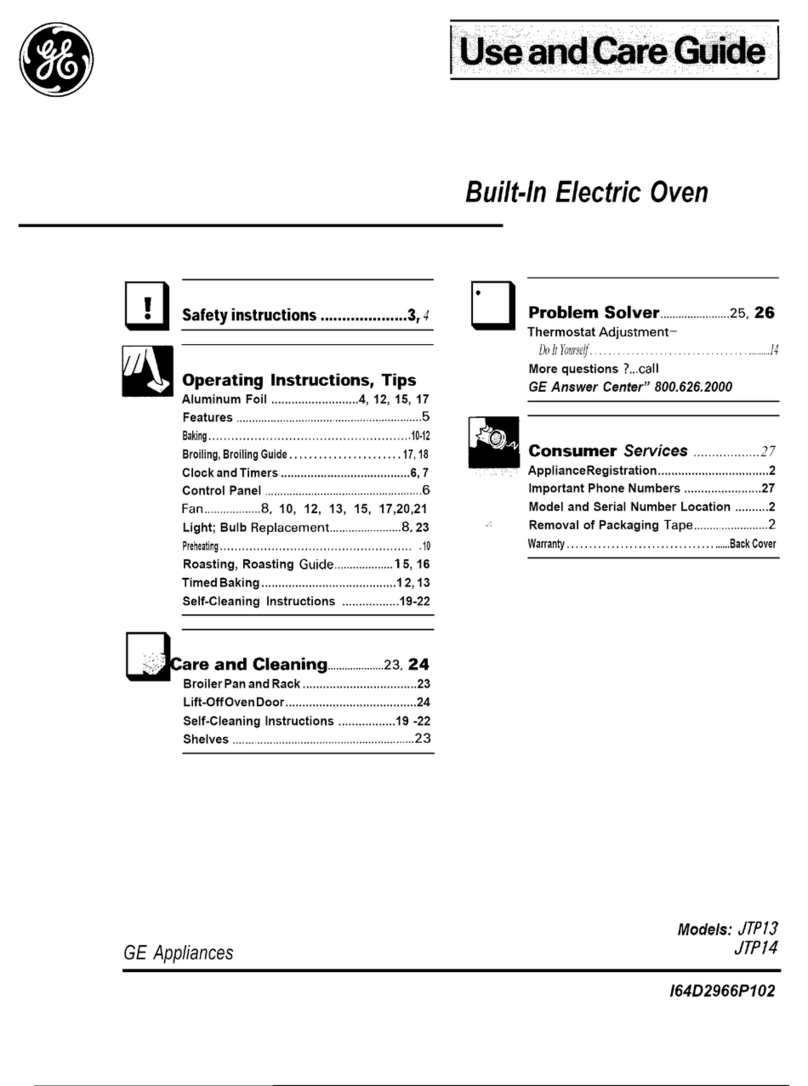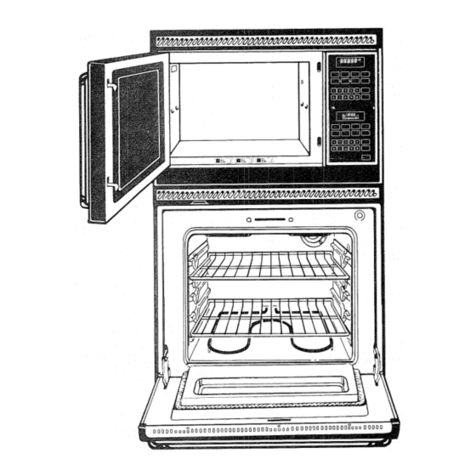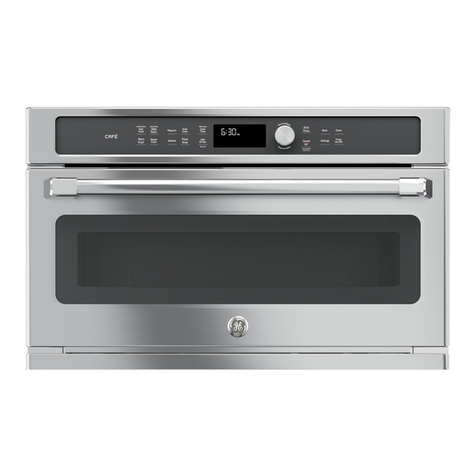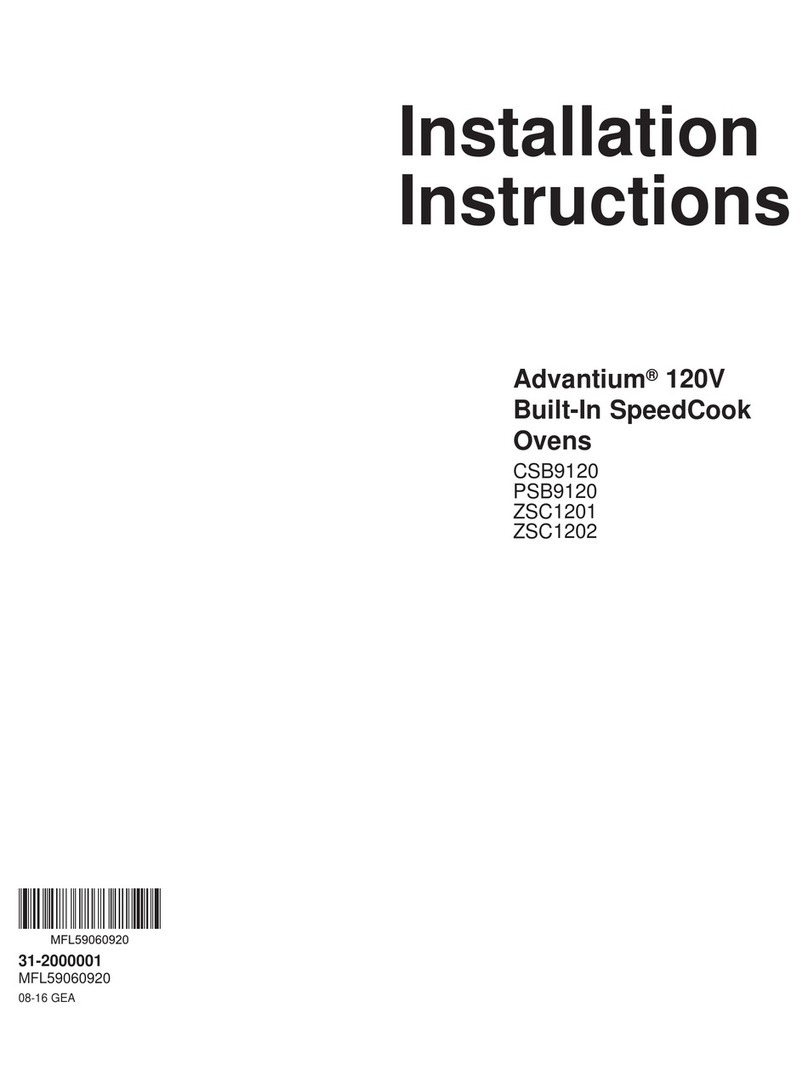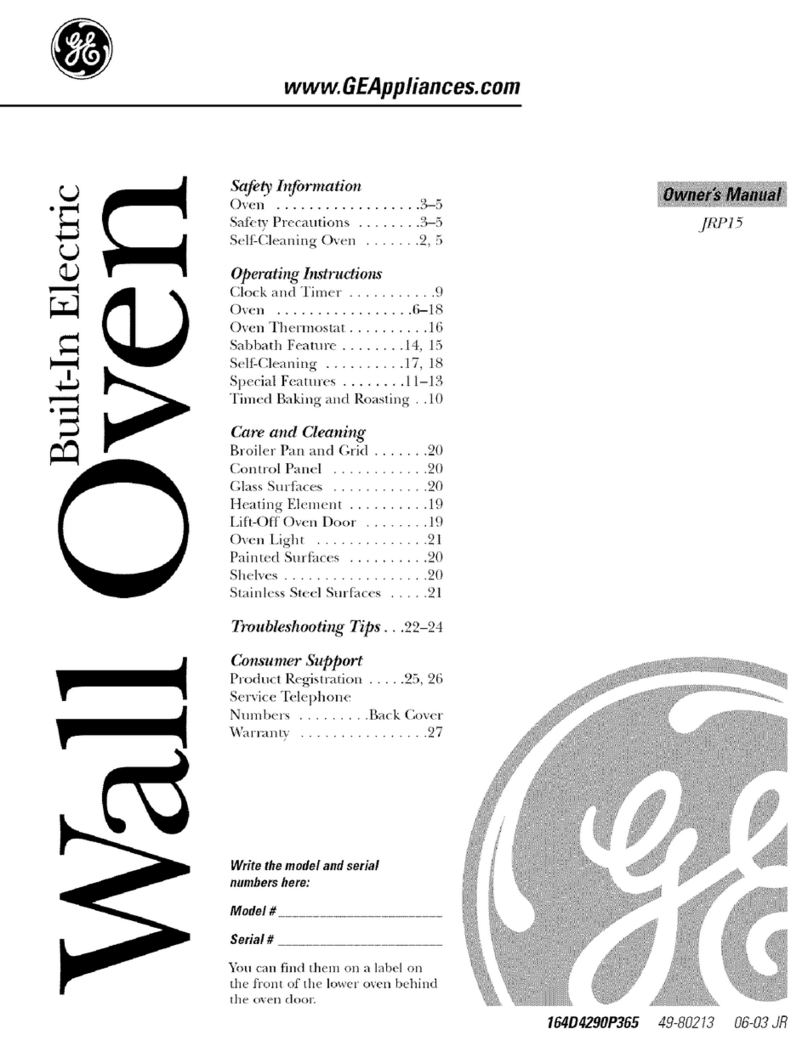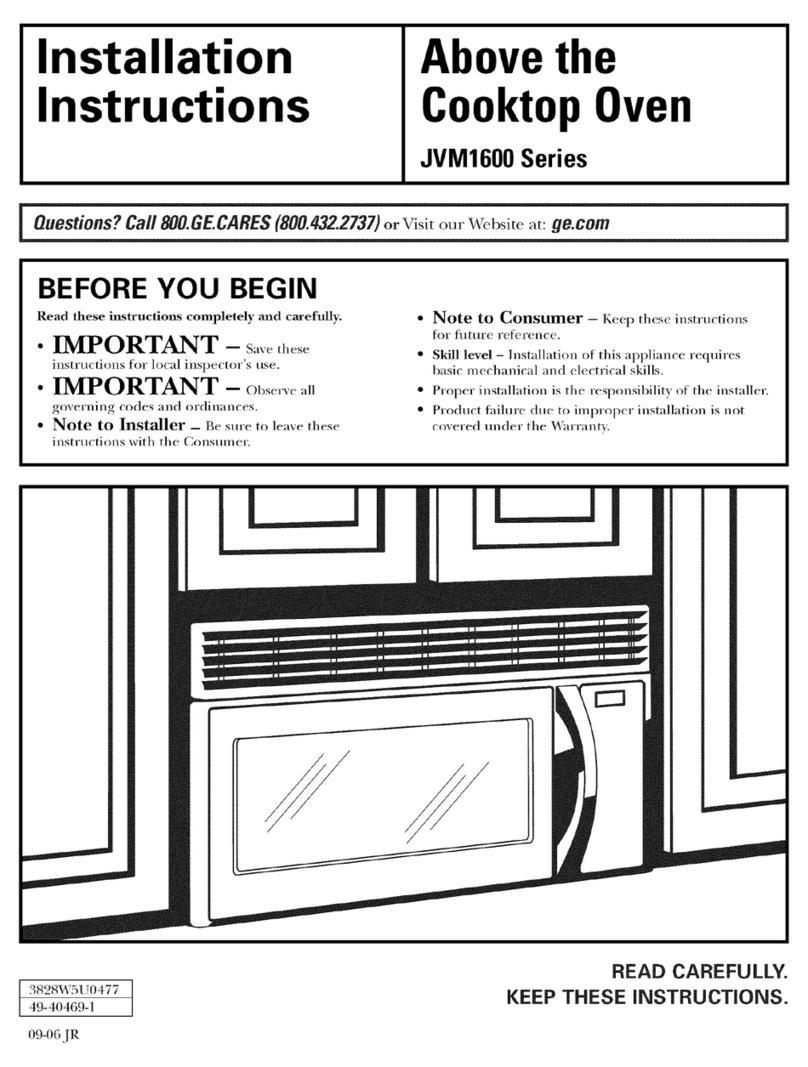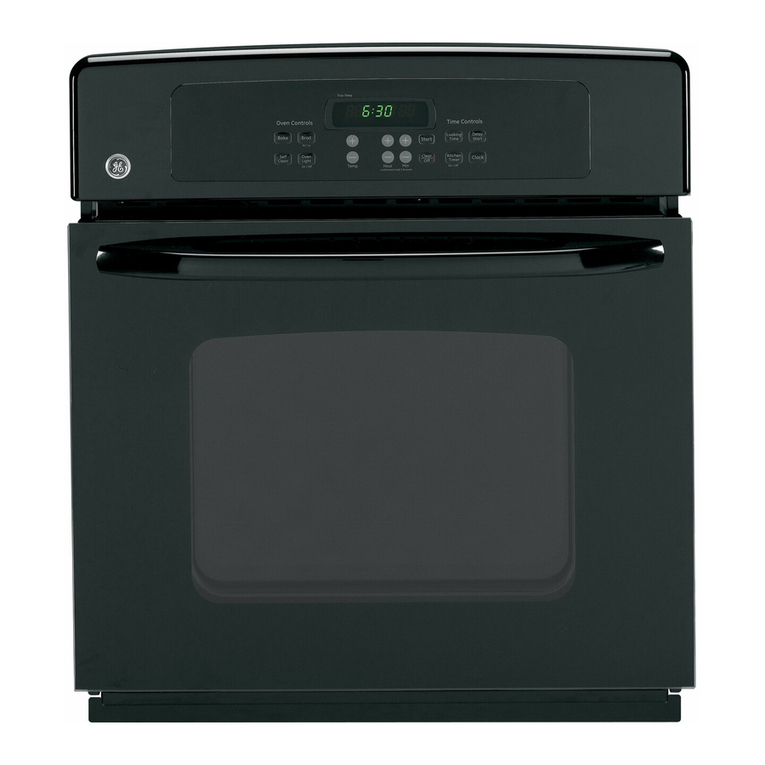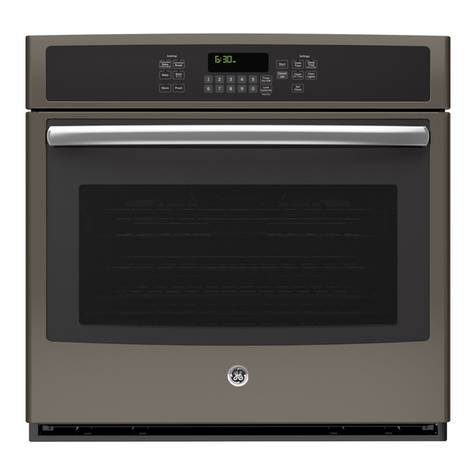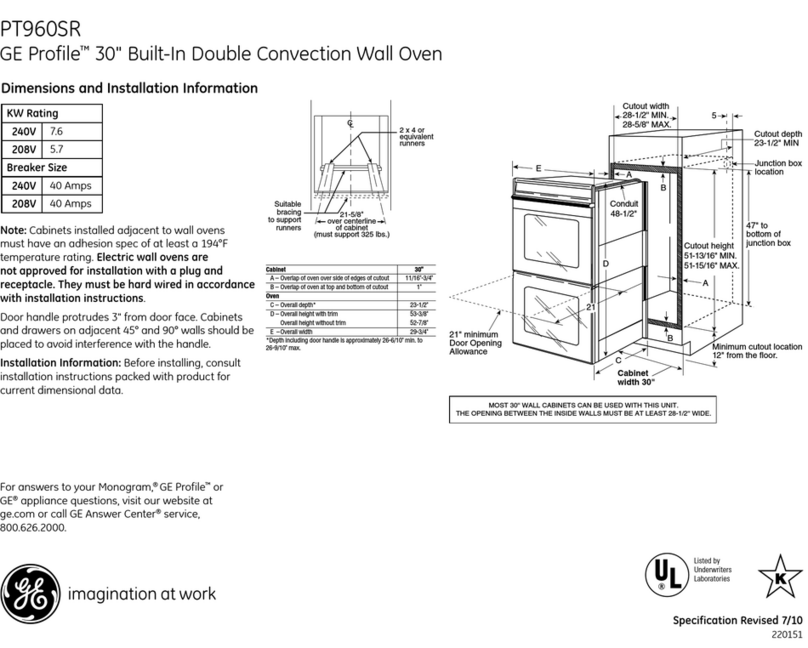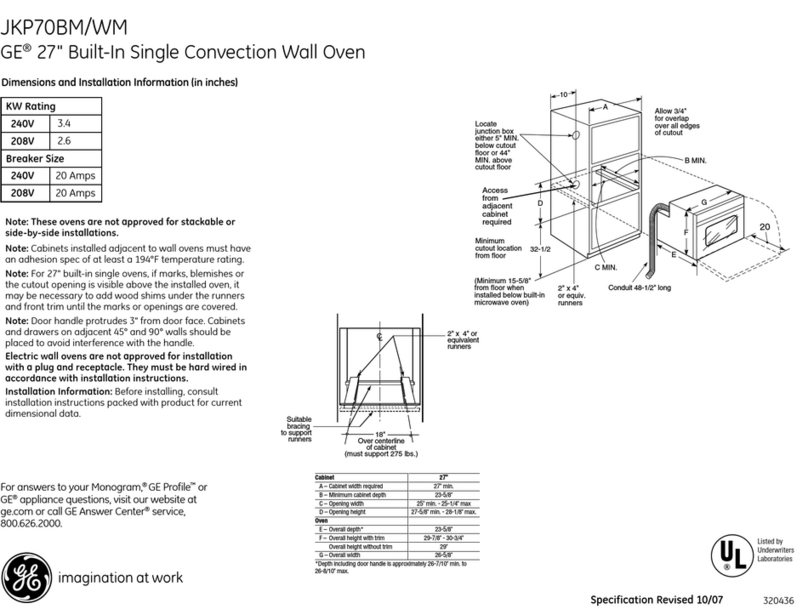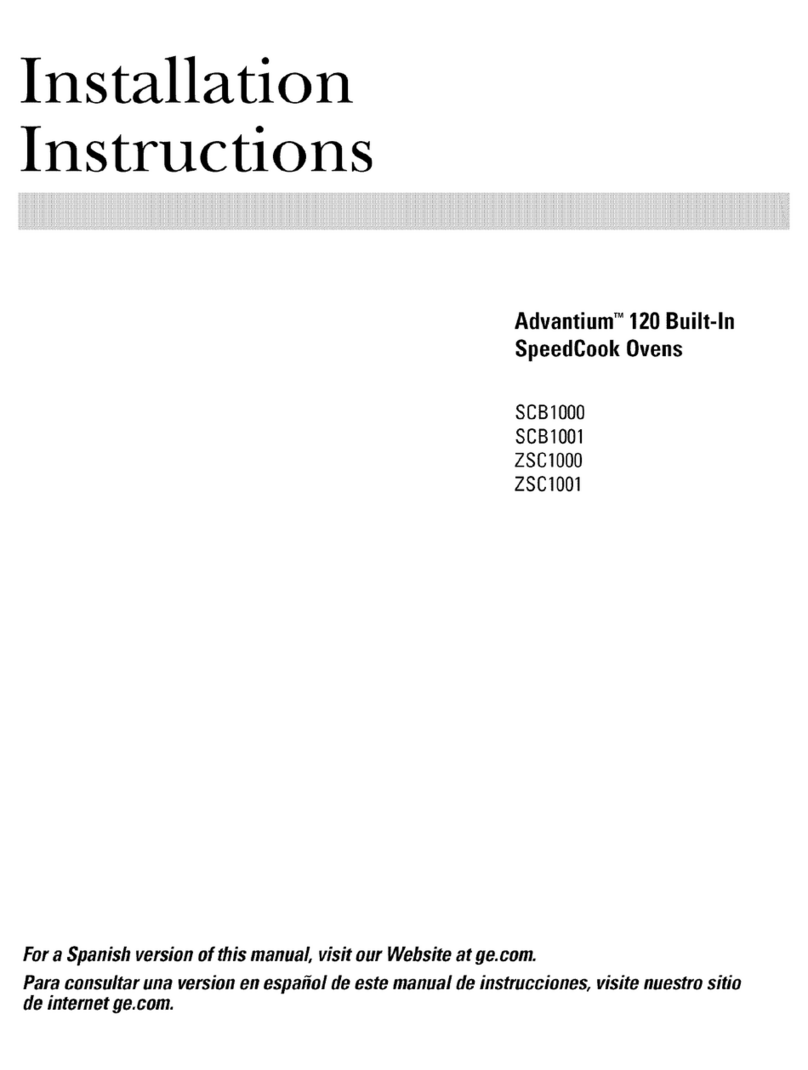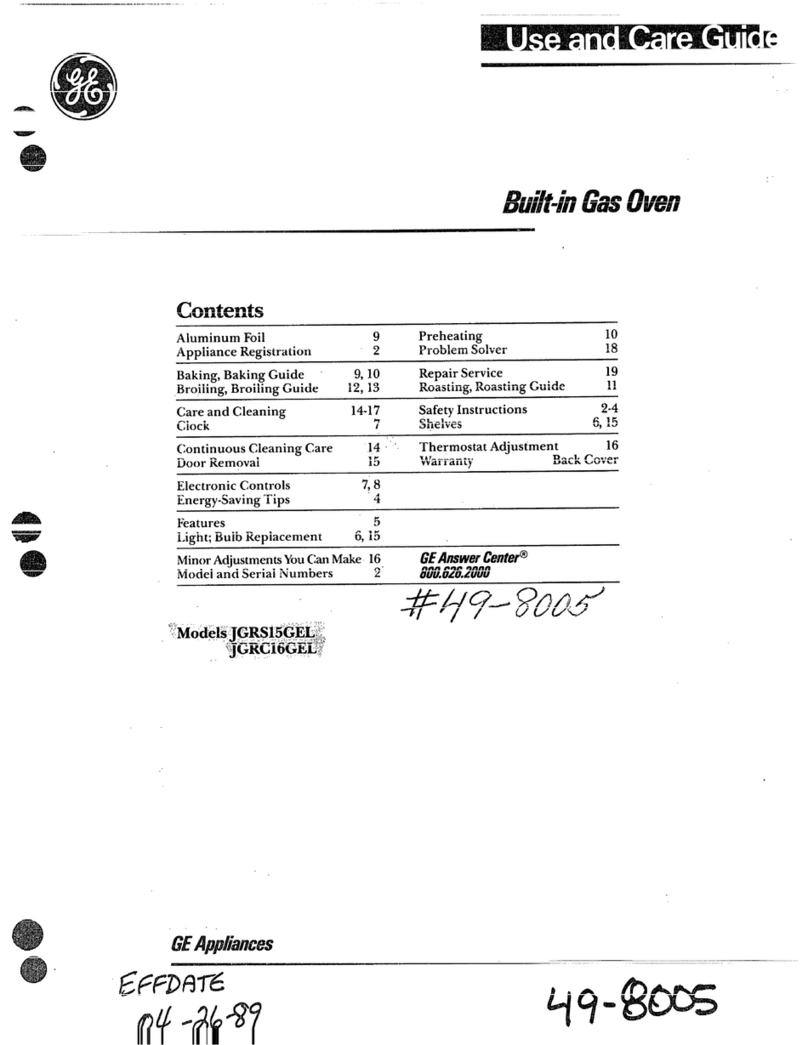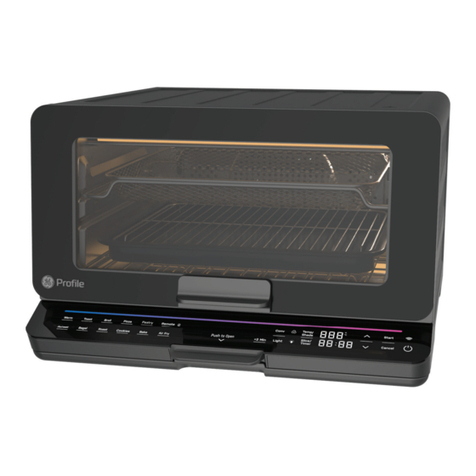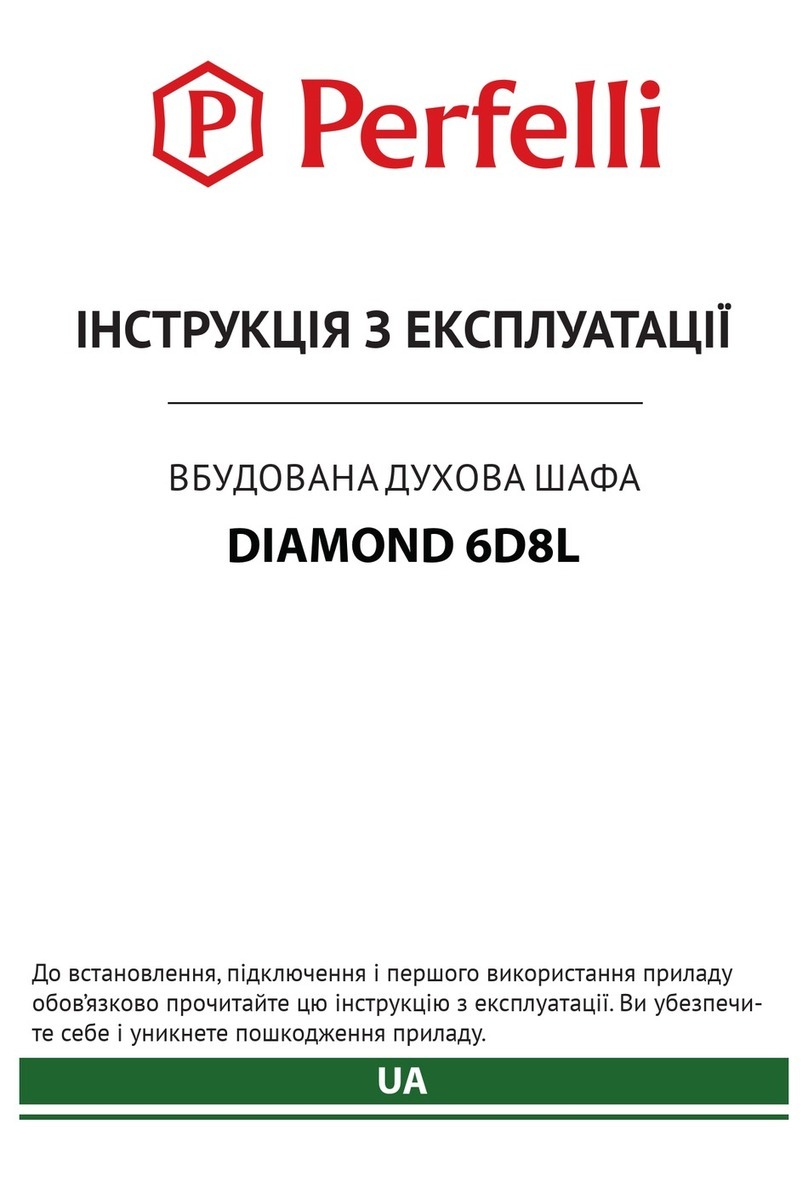IMPORTANT SAFETY INSTRUCTIONS
Read all instructions before using this appliance.
IMPORTANT SAFETY NOTICE
• The California Safe Drinking Water and Toxic
Enforcement Act requiresthe Governorof
California to publish a list of substancesk_wa to
the state to cause cancer, birthdefix'tsor other
reprodu_iveharm,andrequiresb.sinessestowarn
customers of potential exposu_ to such substances.
• Gas appliances can cause minor exposure
to four of thesesabstonea_ nan_ly benzene,
carbon monoxide, formaldehyde and soot, caused
prin_ily by the incomplete combustion ofnatoral
gas orLP fuels. Properly adjustedburners,
indicated by a bluish ra_er than a yellow flame,
will minimize incompi_ cm_mlstien. Exposure
to these substances can be minimized furtherby
venting with aftopen window orusing a
ventilation fan orhood.
When You Get Your Oven
• Have the installer show you the location of
the oven gas ent-off valve and how to shut it
off if necessary.
•Have your oven installed and properly
grounded by a qualified installer, in a_ordanee
with the Installation _. Any adjustment
and service should be performed only by qualified
gas oven installers or service technicians.
•Do not attempt to repair or replace any part of
your oven unless It is specifically recommended
in this guide. All other servicing should be
referredto a qualified technician.
•Be sureaHpackagingmaterials areremoved
fromthe oven beforeoperatingit, toprevent
fireorsmokedamageshould thepackaging
material ignite.
•Be sure the ovenis securely installed in a
cabinet thatis firmly attachedto the house
structure. Neverallow anyoneto climb,sit, stand
orhangon the ovendoor.
• Be sure your oven is correctly adjusted by a
qualified service technician or installer for the
type of gas (Natural or LP) that is to be used.
Your oven can be converted for use on either type
of gas. See the Installation I_tructions.
WARNING: These adJUstments must be made
by a q.alified service technician in accordance
with the manu_-mrer's _and all codes
and requirements of the authority having
jmisdiction. Failure to follow these insu'u_ons
couldresultinseriousinjuryorprol_ly damage.
The qualified agency performing this work
assumes responsibility for the conversion.
Using Your Oven
• Do not leave children alone or unattended
where amoven is hot or in oporatinn_They
could be seriously b_l.
• Do not allow anyone to climb, stand or hang
on the door or the broiler drawer. They. enuld
damage the oven.
•CAUTION: ITEMS OF INTEREST TO
CmLDREN SHOULD NOT BE STORED IN
CABINETS ABOVE AN OVEN--CHILDREN
CLIMBING ON THE OVEN TO REACH
ITEMS COULD BE SERIOUSLY IN_YRED.
•Teach children not to play with the controls
or any other partof the oven.
•Never leave the oven deer open whenyou are
not watching the oven.
•Always keep combustible wall coverings, curtains
or drapes a safe distance from your oven.
•Never wear loose fitting or hanging garments
while using the appliance. Be careful when
reaching for items stored in cabinets over the
oven. Flammable material could be ignited if
brought in contact with flame orhot oven surfaces
and may cause severe burns.
•For your safety, never use your appliance for
warming or heating the room.
.Donotusewaterongreasefires.
SmotherfLrCorflameoruseamulti-
purposedxychemicalorfoam-type
fireextinguisher.
Flamein the oven can be smothered completely
by closing the oven door and turning the oven
off orby using amulti-purpose dry chemicalor
foam-type fire extinguisher.
(_ nextpage)
3






